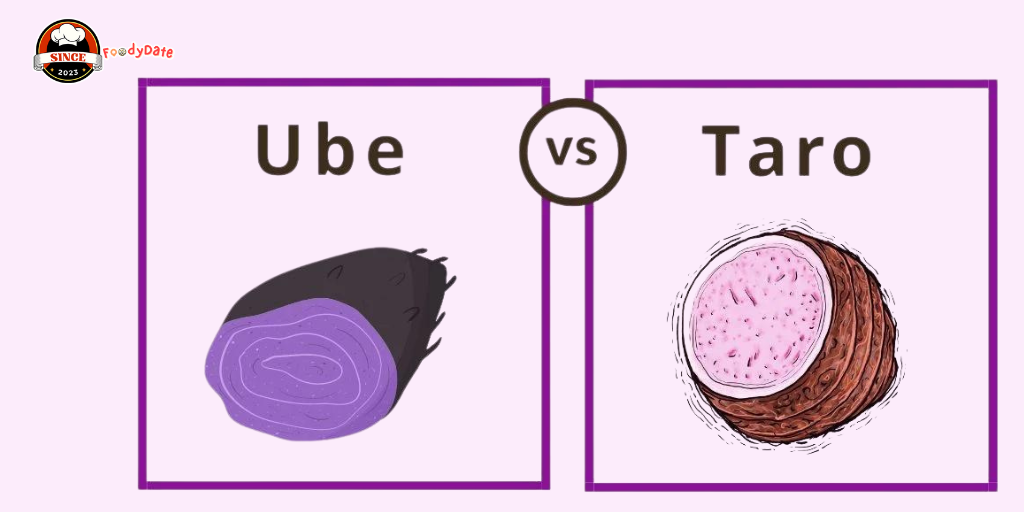
Delhi, India, 8th March 2024, ZEX PR WIRE, The “Ube vs. Taro” discussion fascinates culinary enthusiasts, highlighting the unique attributes and cultural roles of these tropical tubers. Ube, with its vivid purple color, is integral to Filipino cuisine, enriching dishes with its aesthetic and flavor. Taro, recognized for its earthy, nutty taste and speckled appearance, is essential in various Asian and Pacific dishes. This debate underscores the versatility and culinary significance of both, promoting a deeper understanding and appreciation within the food community, and encouraging innovative uses in diverse and flavorful dishes.
Ube vs. Taro: A Culinary Showdown
In the “Ube vs. Taro” culinary comparison, the primary distinctions are rooted in their visual and taste profiles. Ube is lauded for its vibrant purple flesh, which not only elevates the aesthetic appeal of dishes but also contributes a unique sweet, earthy flavor with hints of nuttiness. This combination of distinct sweetness and creamy texture has catapulted ube into the limelight, making it a favored ingredient in a myriad of desserts like ube halaya, ice cream, and cakes. Moreover, its popularity extends to colorful cocktails and lattes, which have taken social media by storm. Taro, on the other hand, offers versatility with a more pronounced earthy taste, finding its way into an array of both savory and sweet creations, including the globally beloved bubble tea. This juxtaposition of ube’s sweetness against taro’s earthiness underscores the diverse culinary applications and flavor profiles of these two tubers in the “Ube vs. Taro” debate.
Finding Fresh Ube and Taro
In the Philippines, sourcing fresh ube is an adventure in itself. Local and farmers’ markets, specialty stores, and even street vendors are abundant with this cherished ingredient. The ease of access to fresh ube underscores its significance in Filipino culinary traditions and its growing appeal globally. For those outside the Philippines, the popularity of ube has led to the availability of ready-made products and ingredients in Asian grocery stores and online platforms, making it easier for the global community to experiment with this exquisite tuber.
Culinary Creativity and Nutritional Benefits
Both ube and taro are not just culinary delights; they’re packed with nutritional value. Rich in carbohydrates, fiber, vitamins, and minerals, they contribute to a balanced diet. Their high anthocyanin content, especially in ube, adds not only a vibrant color but also a boost of antioxidants, making them a healthy addition to any meal.
The FoodyDate Perspective
For culinary aficionados and date-night planners seeking unique dining experiences on platforms like FoodyDate, the contrast between ube and taro offers a rich tapestry of flavors and textures to explore. Whether it’s crafting an ube-infused dessert for a romantic evening or incorporating taro into savory dishes for a cultural night, these ingredients provide a versatile palette to create memorable meals.
In the context of ube vs. taro, both tubers hold their ground with distinctive qualities that enrich culinary traditions. As the global food scene continues to embrace these ingredients, the debate on FoodyDate and beyond is not just about preference but about celebrating the diversity and richness of world cuisines. Engaging in this culinary exploration allows food lovers to appreciate the depth of flavors these tubers bring to the table, making every dish a testament to their cultural heritage and nutritional value.
Conclusion
The culinary exploration of “Ube vs. Taro” not only highlights the distinct taste and texture of these vibrant tubers but also serves as a gateway to discovering cultural richness and diversity. These ingredients encourage food enthusiasts, especially those on platforms like FoodyDate, to delve into culinary innovation and bridge cultural gaps. Experimenting with ube and taro’s unique flavors and textures prompts us to embrace creativity and appreciate the vast spectrum of culinary diversity. As we embark on this gastronomic journey, armed with enthusiasm for the “Ube vs. Taro” debate, we’re ready to uncover new tastes, share delightful experiences, and celebrate the communal joy of cooking and dining together.
FAQs (Frequently Asked Questions)
Q. What are the main differences between Ube and Taro?
Ube is popular in desserts and colorful drinks for its vibrant purple color and sweet, earthy flavor with nutty undertones. It can be used in both savory and sweet dishes, including bubble tea.
Q. Where can I find fresh Ube and Taro?
In the Philippines, fresh ube is available at local and farmers’ markets, specialty stores, and street vendors. Asian grocery stores and online platforms are increasingly carrying ube and taro products and ingredients.
Q. How do Ube and Taro contribute to nutritional value in a diet?
Both contain carbohydrates, fiber, vitamins, and minerals. Ubes are known for their high anthocyanin content, providing antioxidants and vibrant color.
Q. How are Ube and Taro used in culinary creations?
Desserts like halaya, ice cream, and cakes are made with ube, as are cocktails and lattes. Taro features in both savory and sweet recipes, including bubble tea.
Q. Why is the “Ube vs. Taro” debate important in the culinary world?
In addition to enriching culinary traditions, the debate also encourages innovative uses of tubers. It promotes creativity and diversity in cooking and dining among the food community.
The Post FoodyDate’s Ube vs. Taro Showdown first appeared on ZEX PR Wire
Information contained on this page is provided by an independent third-party content provider. Binary News Network and this Site make no warranties or representations in connection therewith. If you are affiliated with this page and would like it removed please contact [email protected]
